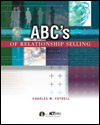Charles M. Futrell,
Texas A&M University
| complimentary approach | An approach that opens with a compliment that is sincere and therefore effective.
(See 242)
|
 |
 |
 |
| creative imagery | A relaxation and concentration technique that aids in stress management, in which a salesperson envisions successful coping in various sales situations.
(See 238)
|
 |
 |
 |
| curiosity approach | An approach by which the salesperson asks a question or does something to make the prospect curious about the product.
(See 246)
|
 |
 |
 |
| customer benefit approach | An approach by which the salesperson asks a question(s) that implies that the product will benefit the prospect.
(See 245)
|
 |
 |
 |
| direct question | A question that by and large can be answered with a yes or no response or at most by a very short response consisting of a few words.
(See 251)
|
 |
 |
 |
| introductory approach | The most common but least powerful approach; it does little to capture the prospect's attention.
(See 242)
|
 |
 |
 |
| multiple-question approach (SPIN) | An approach in which the salesperson uses three types of questions-situation, problem implication, and need-payoff-to get a better understanding of the prospect's business.
(See 247)
|
 |
 |
 |
| nondirective question | A question that opens up two-way communication by beginning the question with who, what, where, when, how, or why.
(See 251)
|
 |
 |
 |
| opinion approach | An approach by which a salesperson shows that the buyer's opinion is valued.
(See 247)
|
 |
 |
 |
| premium approach | An approach in which the salesperson offers a prospect something as an inducement to buy.
(See 243)
|
 |
 |
 |
| product approach | An approach in which the salesperson places the product on the counter or hands it to the customer, saying nothing.
(See 243)
|
 |
 |
 |
| redirect question | A question that guides the prospect back to selling points that both parties agree on.
(See 252)
|
 |
 |
 |
| referral approach | An approach that uses a third person's name as a reference to approach the buyer.
(See 242)
|
 |
 |
 |
| rephrasing question | A question in which the salesperson rephrases what the prospect has said in order to clarify meaning and determine the prospect's needs.
(See 252)
|
 |
 |
 |
| shock approach | An approach that uses a question designed to make the prospect think seriously about a subject related to the salesperson's product.
(See 247)
|
 |
 |
 |
| showmanship approach | An approach that involves doing something unusual to catch the prospect's attention and interest.
(See 244)
|




 2002 McGraw-Hill Higher Education
2002 McGraw-Hill Higher Education